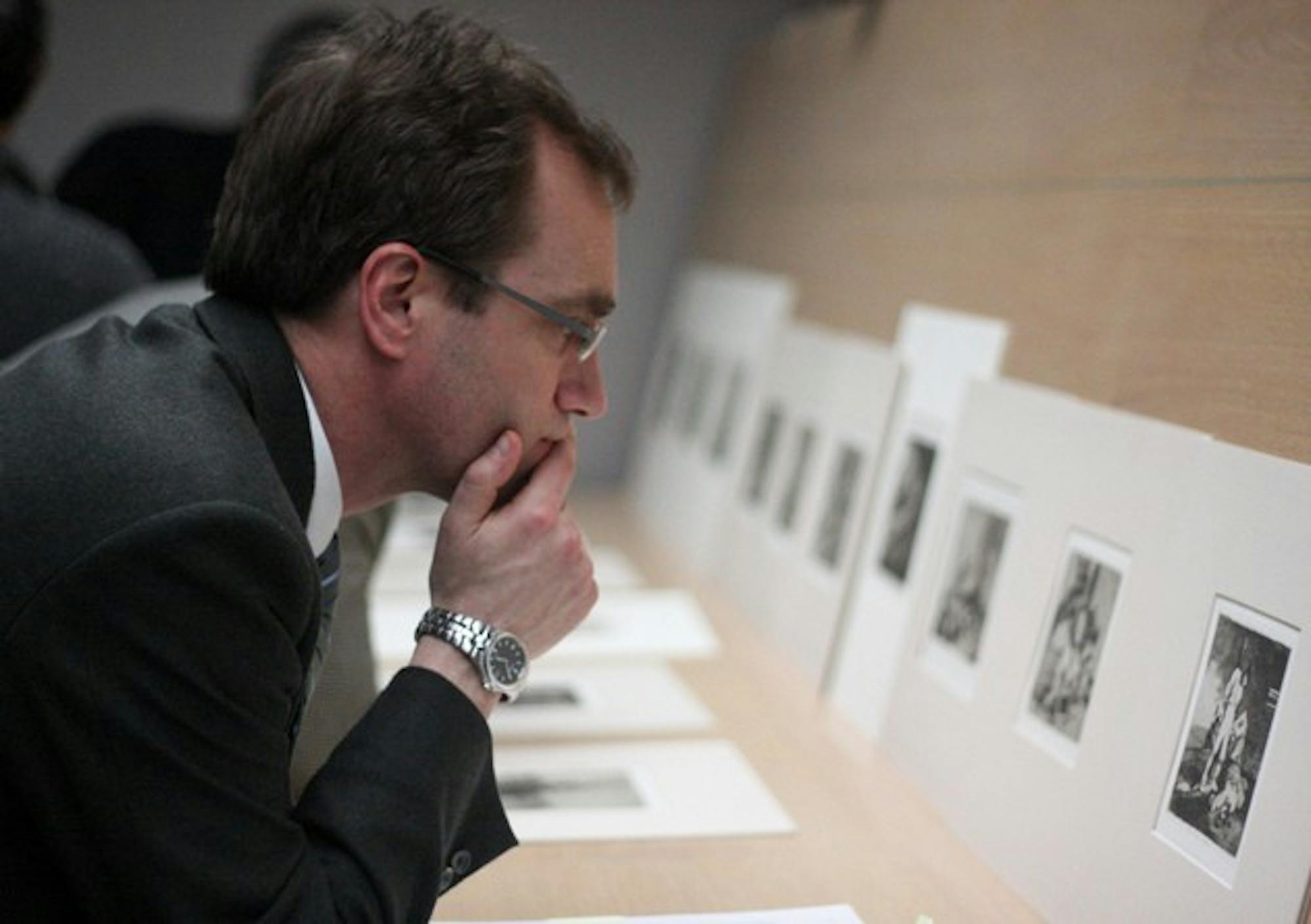In "The Third of May 1808," Goya connected Spanish nationalism with its Christian heritage through his martyr-like portrayal of a Spanish nationalist, Andrew Schulz '86, an art history professor at the University of Oregon, said. According to Schulz, Goya integrated Spain's Islamic past with its national artistic identity in his depiction of Muslims in "The Second of May 1808."
Goya's reputation as an enlightened thinker conflicted with his obsession with wealth, Luis Fernndez Cifuentes, a professor of romance languages and literature at Harvard University, said in his lecture, "Goya and Money." Goya often wrote letters requesting payments of debt and increased salary wages, according to Cifuentes. His concern with financial matters, he said, is also evident in the elaborate clothing in his paintings.
Goya's ability to portray the ambiguity of social class continues to resonate with film viewers today, Marvin D'Lugo, a Spanish language professor at Clark University, said in his lecture "The Cinematic Goya." Films depicting Goya's life and works range from the musical "Goyescas" to the 2000 film "Goya in Bordeaux. "
French Romantic painter Theodore Gericault and Goya were separated by age and war experiences, but they shared a common quest for "meaning in a post-Napoleonic age," argued Janis Tomlinson, director of university museums at the University of Delaware. Both painters sought to push human forms to the extreme, looking beyond historical figures to focus on marginalized people, she said.
Through his Caprichos prints, Goya was able to show what he perceived as the follies of Spanish society, Stanford University literature professor Hans Ulrich Gumbrecht said. The prints demonstrate the "crisis of representation," a phenomenon in which the act of viewing fundamentally changes what is being viewed, Gumbrecht said. Gumbrecht added that he was grateful for the opportunity to interact with other Goya experts.
"I feel humbled now after the morning and afternoon sessions," Gumbrecht told his colleagues. "You know everything about Goya."
After the lectures, event-goers enjoyed a private viewing of the Hood's Goya collection, which includes the complete 80-print set of "Disasters of War" and some of the Caprichos prints.
"I think it's pretty incredible just to have this group of scholars on Goya all together," Leah Ansell '08 said."To hear them interact and share ideas was pretty interesting."
The symposium was organized by Jose del Pino, chair of the Dartmouth's department of Spanish and Portuguese, and was sponsored by the Leslie Center for the Humanities, the Dickey Center for International Understanding, the Hood Museum of Art, the Office of the Dean of the Faculty, the Department of Spanish and Portuguese, the Department of Art History and the Spanish Consulate at Boston.




